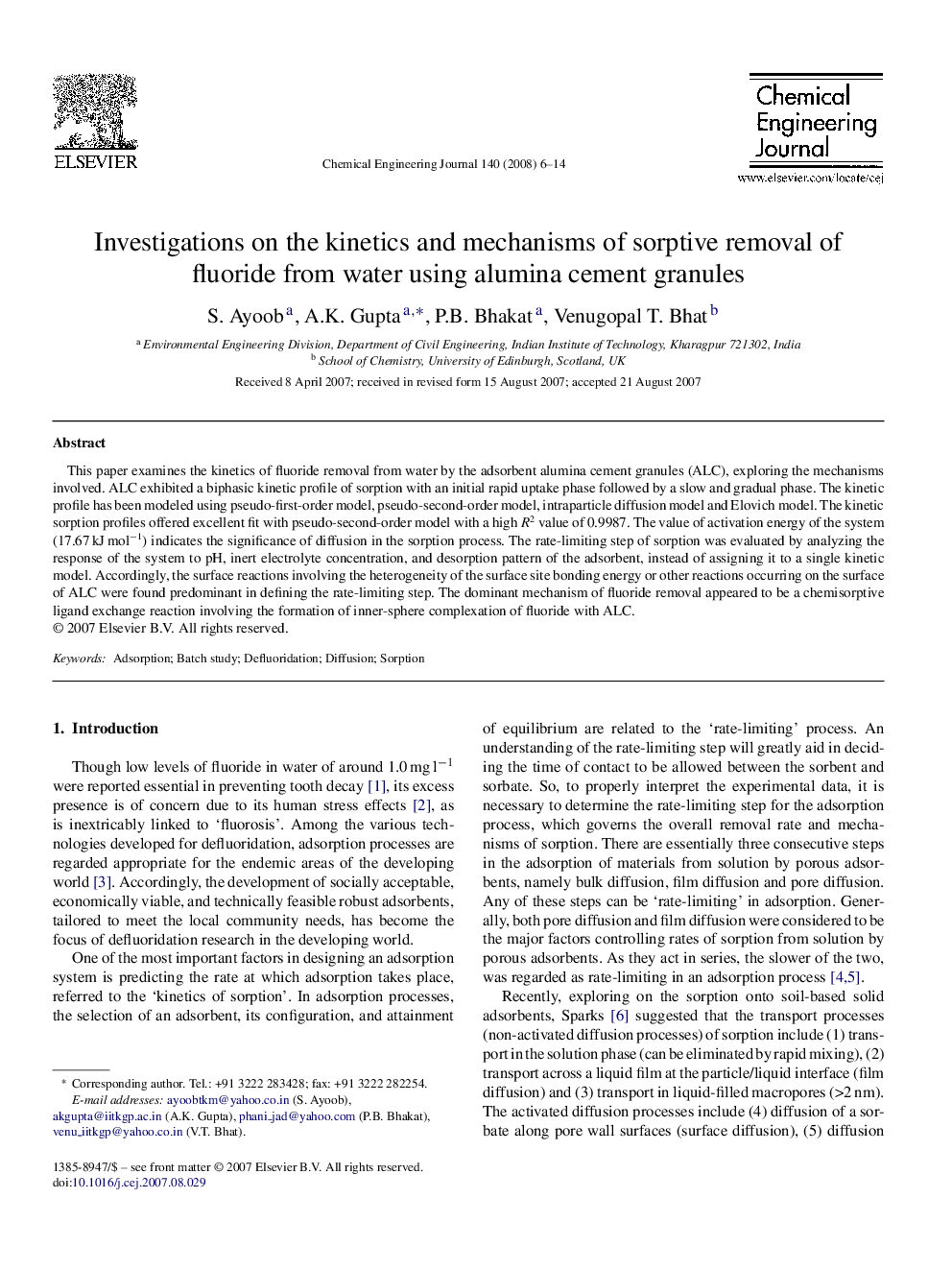| کد مقاله | کد نشریه | سال انتشار | مقاله انگلیسی | نسخه تمام متن |
|---|---|---|---|---|
| 153079 | 456519 | 2008 | 9 صفحه PDF | دانلود رایگان |

This paper examines the kinetics of fluoride removal from water by the adsorbent alumina cement granules (ALC), exploring the mechanisms involved. ALC exhibited a biphasic kinetic profile of sorption with an initial rapid uptake phase followed by a slow and gradual phase. The kinetic profile has been modeled using pseudo-first-order model, pseudo-second-order model, intraparticle diffusion model and Elovich model. The kinetic sorption profiles offered excellent fit with pseudo-second-order model with a high R2 value of 0.9987. The value of activation energy of the system (17.67 kJ mol−1) indicates the significance of diffusion in the sorption process. The rate-limiting step of sorption was evaluated by analyzing the response of the system to pH, inert electrolyte concentration, and desorption pattern of the adsorbent, instead of assigning it to a single kinetic model. Accordingly, the surface reactions involving the heterogeneity of the surface site bonding energy or other reactions occurring on the surface of ALC were found predominant in defining the rate-limiting step. The dominant mechanism of fluoride removal appeared to be a chemisorptive ligand exchange reaction involving the formation of inner-sphere complexation of fluoride with ALC.
Journal: Chemical Engineering Journal - Volume 140, Issues 1–3, 1 July 2008, Pages 6–14